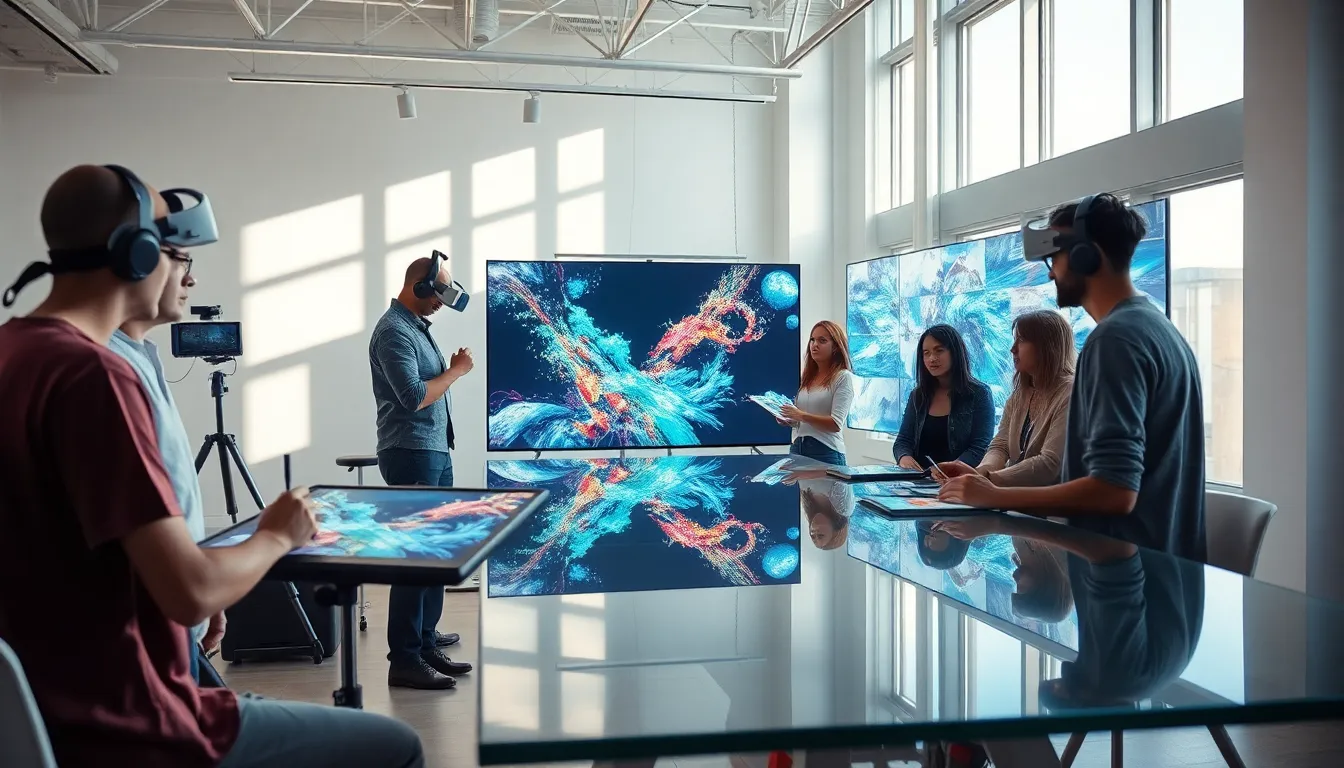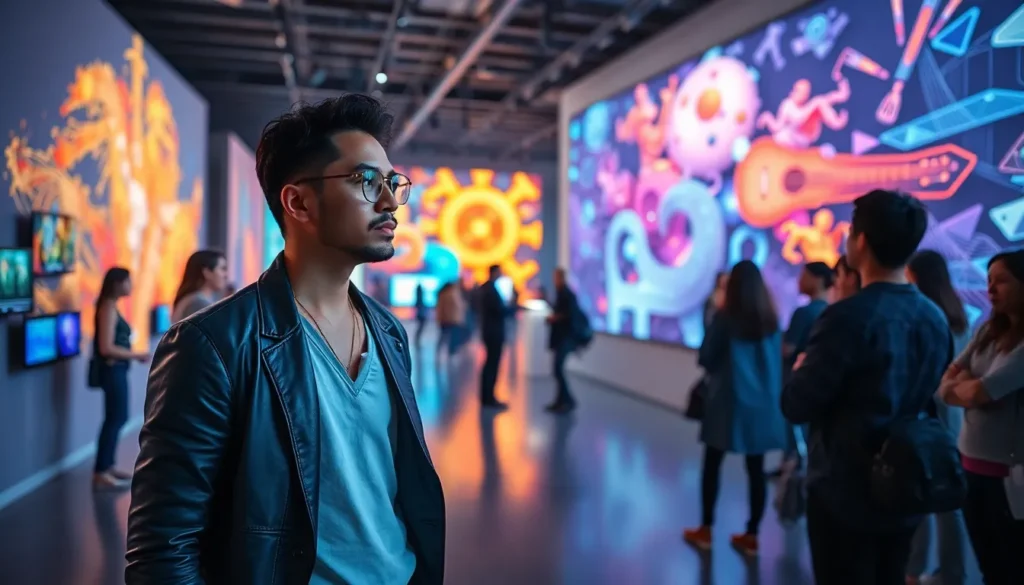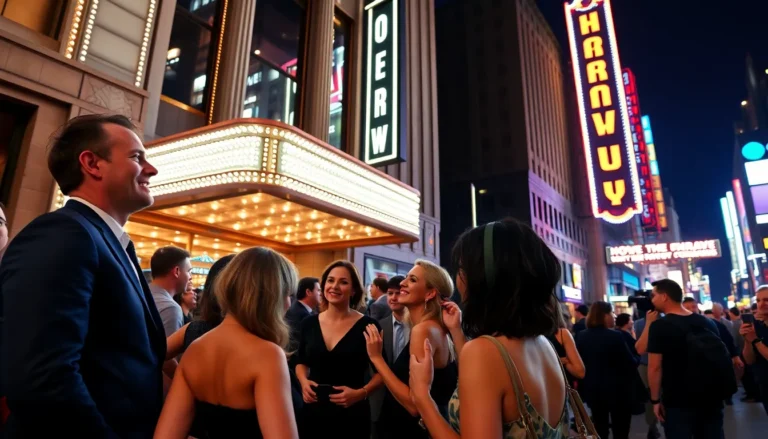Imagine walking into a gallery where paintings aren’t just static images but vibrant portals into new worlds, sounds swirling around you, colors resonating with emotion. Welcome to the fascinating realm where arts meet audio and video technology. With the rapid evolution of communication tools, artists today are redefining creative expression in ways once thought impossible. Buckle up as we explore this dynamic intersection, where imagination dances with innovation, and every frame tells a story.
Table of Contents
ToggleThe Intersection of Arts and Technology

Historical Context
Throughout history, the relationship between arts and technology has been anything but mundane. From the first cave paintings to the rich tapestries of the Renaissance, artists have always leveraged available technology to enhance their creations. The invention of the printing press revolutionized how art was distributed: suddenly, artists could reach wider audiences. Fast forward to the 20th century, where film and photography expanded the boundaries of visual storytelling, capturing moments in time with unprecedented accuracy. Today, as digital innovations surge, we find ourselves at another turning point, one that promises to reshape how art is created, shared, and experienced.
Modern Artistic Practices
In contemporary society, artistic expression is increasingly intertwined with technology. Artists now incorporate various media, from digital painting software to high-tech installations. As virtual reality and augmented reality become more mainstream, they open up a new frontier for artistic exploration. Artists can create immersive experiences that place viewers directly in the artwork, inviting them not just to observe but to participate and interact. This fusion of artistic vision and technological advancement forms a vibrant tapestry of modern artistic practices.
Enhancing Creative Expression
Digital Media in the Arts
Digital media has emerged as a cornerstone of 21st-century artistic practice. Artists harness the power of computer graphics, animation, and video to craft stories that resonate with audiences on deeper levels. Digital platforms allow for experimentation that traditional media cannot. Whether through interactive websites or animated films, artists can engage in storytelling methods that were previously impossible. Also, social media has enabled the sharing of artistic creations to global audiences instantly, driving a democratization of art.
Innovative Tools and Software
With tools like Adobe Creative Suite, Procreate, and Blender, the limits of artistic expression are expanding. They come equipped with features that push creativity into new dimensions, think animations that dance with sound or illustrations that transition seamlessly into motion. Artists are now empowered to explore ideas fully and experiment without the fear traditionally linked to physical media. This expansion into tech-savvy tools allows for a fusion of visual artistry with audio, creating multi-sensory experiences that captivate the audience.
Impact on Live Performances
Audio/Video Technology Advancements
Audio and video technology is continually evolving, profoundly affecting live performances. Sound quality has reached astonishing heights, leaving audiences entranced with auditory experiences that enhance emotional engagement. Imagine experiencing your favorite band not just through music but through lights synced perfectly to the rhythm, augmented through state-of-the-art projection mapping. This advancement in audio/video tech transforms performances into unforgettable spectacles, where every note and every visual becomes a part of a larger story.
Virtual and Augmented Reality
The introduction of virtual and augmented reality into live performances is nothing short of revolutionary. Imagine attending a concert where, using VR goggles, the audience can explore different realms while the music plays. The artist might appear on stage, but they might also exist in a digital dimension, interacting with animated elements. This fusion between live performance and virtual tech encourages a collaborative experience between the artist and the audience, creating opportunities for deeper emotional connections.
The Role of Communication in Art
Art as a Tool for Social Change
Communication through art is a powerful form of social discourse. Artists use their work to highlight issues prevailing in society, addressing inequity, promoting environmental awareness, or celebrating diversity. The blend of visual narratives with the ability to reach broad audiences through digital channels enhances these messages. Art becomes a catalyst for change, motivating viewers to reflect and take action. This advocacy role emphasizes the potential art holds in shaping public dialogues and influencing policy decisions.
Engaging Audiences Through Interactive Media
Interactivity is not just a trend: it’s a transformative approach to artistic engagement. Audiences want to connect with art personally, a demand that interactive media meets with finesse. From interactive installations in galleries to audience participation in theatrical performances, the lines between artist and audience blur. Techniques like crowd-sourced storytelling or digital feedback systems allow for real-time interaction, making the audience integral to the creation and evolution of the art.





